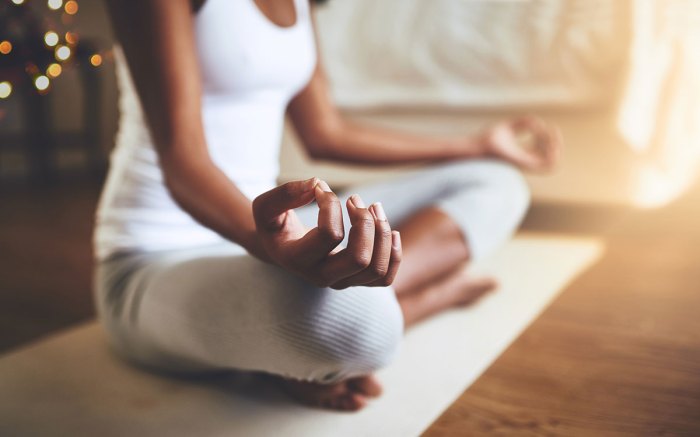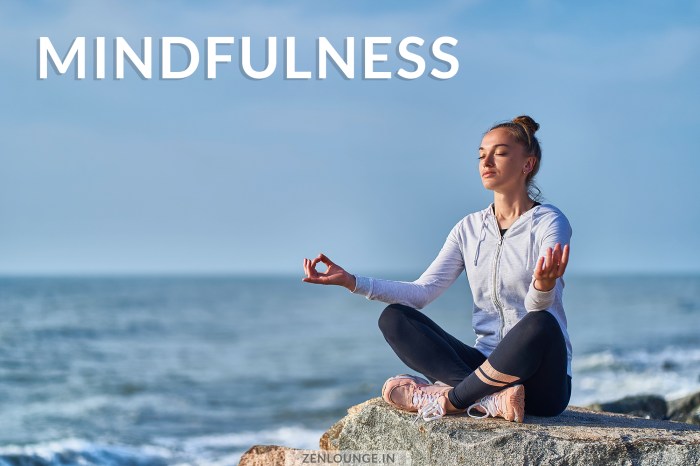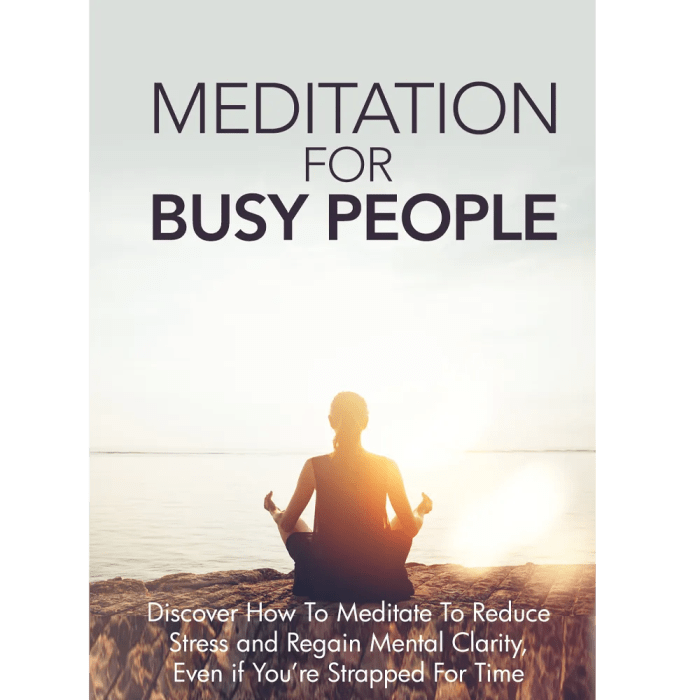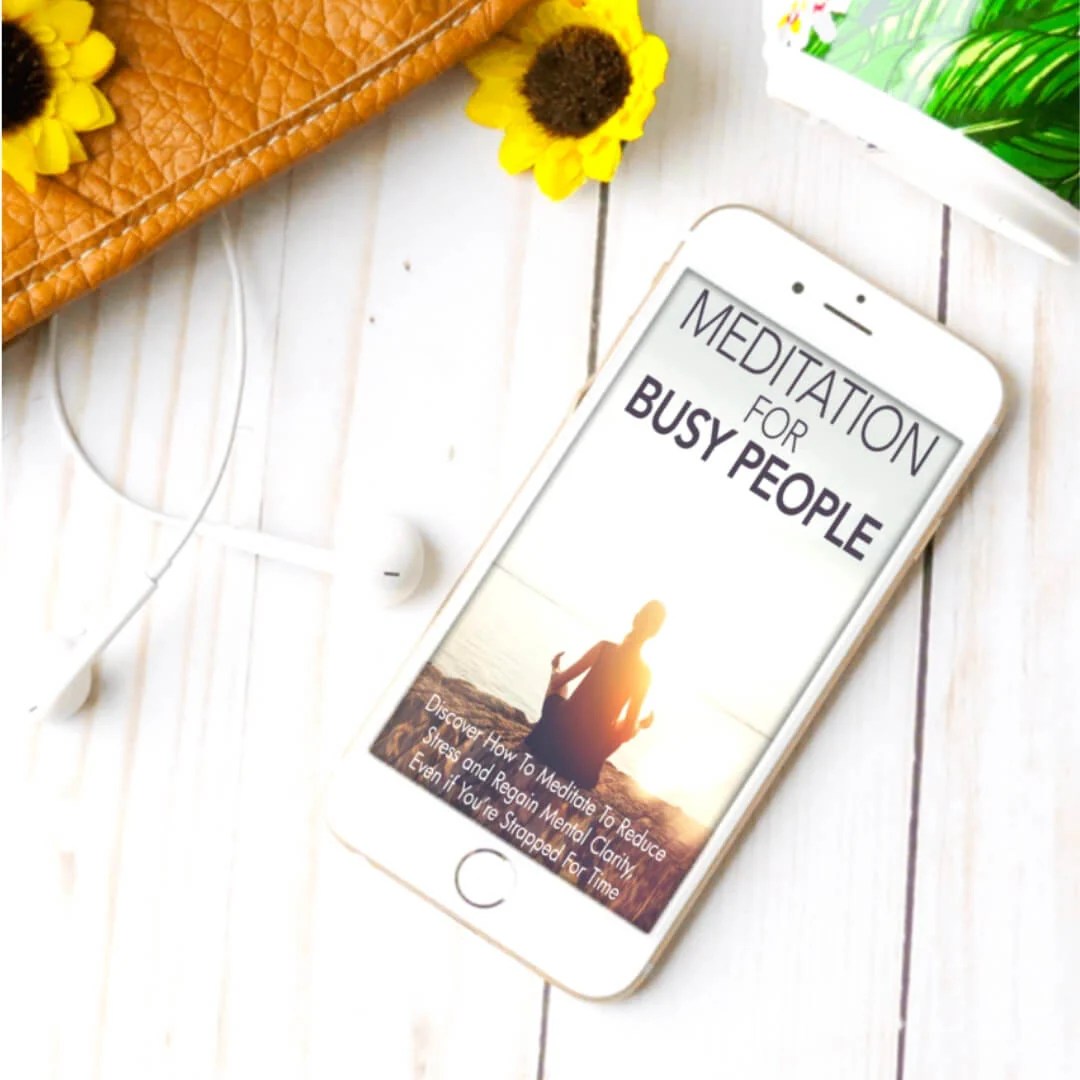Embracing the essence of 8 Mindful Meditation Practices for Busy People, immerse yourself in a world where tranquility meets productivity, offering a path to inner peace amidst life’s hectic pace.
Explore the transformative power of mindful meditation practices tailored for those navigating the demands of a bustling lifestyle.
Introduction to Mindful Meditation
Mindful meditation is a practice that involves focusing your mind on the present moment without judgment. It helps to increase self-awareness, reduce stress, and improve overall well-being. Unlike traditional meditation practices that may involve emptying the mind or focusing on a specific object, mindful meditation encourages you to acknowledge and accept your thoughts and feelings as they arise.
Benefits of Mindful Meditation
- Reduces stress and anxiety levels
- Improves focus and concentration
- Promotes emotional regulation
- Enhances self-awareness and compassion
Why Mindful Meditation is Beneficial for Busy Individuals
Busy individuals often find it challenging to take a break and relax amidst their hectic schedules. Mindful meditation offers a quick and effective way to calm the mind, reduce stress, and improve mental clarity without requiring a significant time commitment. By practicing mindfulness, busy individuals can cultivate a sense of peace and presence in the midst of their busy lives.
Breathing Techniques in Mindful Meditation: 8 Mindful Meditation Practices For Busy People

Breathing techniques play a crucial role in mindful meditation, helping practitioners to center themselves, focus their minds, and cultivate a sense of calm. Deep breathing, in particular, is essential for achieving mindfulness as it can help regulate the nervous system and reduce stress levels.
Diaphragmatic Breathing Exercise
One common breathing exercise used in mindful meditation is diaphragmatic breathing, also known as belly breathing. This technique involves breathing deeply into the diaphragm, allowing the belly to rise and fall with each breath.
- Find a comfortable seated position with your back straight and shoulders relaxed.
- Place one hand on your chest and the other on your belly.
- Inhale deeply through your nose, allowing your belly to expand and rise as you fill your lungs with air.
- Exhale slowly through your mouth, feeling your belly contract as you release the breath.
- Repeat this process for several minutes, focusing on the sensation of your breath moving in and out of your body.
4-7-8 Breathing Technique
The 4-7-8 breathing technique is another effective practice for promoting relaxation and mindfulness. This exercise involves inhaling for a count of 4, holding the breath for a count of 7, and exhaling for a count of 8.
- Sit or lie down in a comfortable position and close your eyes.
- Inhale quietly through your nose for a count of 4.
- Hold your breath for a count of 7.
- Exhale slowly and completely through your mouth for a count of 8.
- Repeat this cycle at least 4 times, focusing on the rhythm of your breath and the sensation of relaxation with each exhale.
Body Scan Meditation

Body scan meditation is a mindfulness practice that involves focusing on different parts of the body, one at a time, to bring awareness to physical sensations, emotions, and thoughts. The purpose of body scan meditation is to cultivate a deeper connection between the mind and body, promote relaxation, reduce stress, and increase self-awareness.
Process of Performing a Body Scan Meditation
To perform a body scan meditation, find a comfortable and quiet place to sit or lie down. Close your eyes and bring your attention to your breath, taking slow and deep breaths to relax your body and mind. Start by focusing on your toes, noticing any sensations or tension in that area. Slowly move your attention up through each part of your body, from your feet to your head, without judgment.
Notice any feelings, sensations, or emotions that arise as you scan each body part.
Benefits of Incorporating Body Scan Meditation into a Daily Routine
- Helps to release tension and reduce physical discomfort in the body.
- Promotes relaxation and reduces stress levels.
- Increases self-awareness and mindfulness of the present moment.
- Enhances the mind-body connection and fosters a sense of well-being.
- Improves sleep quality and overall emotional health.
Mindful Walking Meditation
Walking meditation is a form of mindfulness practice that involves paying attention to the act of walking. It allows us to be fully present in the moment, focusing on each step and the sensations that arise as we move. This practice can help cultivate a sense of calm and awareness in our daily lives.
Comparison with Seated Meditation
In seated meditation, practitioners typically sit still and focus on their breath or a specific point of attention. Mindful walking meditation, on the other hand, involves movement and engages the body in a different way. While seated meditation can be more conducive to deep concentration, walking meditation can help bring mindfulness into our daily activities.
Tips for Busy People
- Integrate mindful walking into your daily routine by taking short walking breaks during the day. This could be as simple as walking around your office or neighborhood for a few minutes.
- Focus on your steps and the sensations in your feet as you walk. Pay attention to the movement of your body and the sounds around you.
- Use walking as a way to transition between tasks or clear your mind. Take a mindful walk before or after work to create a sense of separation and presence.
- Experiment with different walking speeds and notice how it affects your experience of mindfulness. You can also try walking in nature to enhance the connection with your surroundings.
Mindful Eating Practice

Mindful eating is the practice of being fully present and engaged while eating, focusing on the sensory experience of each bite. It involves paying attention to the taste, texture, and smell of food, as well as being aware of hunger and fullness cues. This practice helps cultivate a healthier relationship with food and promotes a more mindful approach to nourishing the body.
Concept of Mindful Eating
- Acknowledge your hunger level before eating.
- Focus on the colors, textures, and flavors of your food.
- Eat slowly and savor each bite.
- Be mindful of when you start feeling full and stop eating when satisfied.
- Avoid distractions like watching TV or using your phone while eating.
Benefits of Mindful Eating
- Helps prevent overeating and promotes healthier portion control.
- Enhances digestion and nutrient absorption by allowing the body to properly process food.
- Promotes a greater appreciation for food and the effort that goes into preparing meals.
- Reduces stress and anxiety around meal times by focusing on the present moment.
- Can lead to weight management and overall improved well-being.
Grounding Techniques in Mindful Meditation

Grounding techniques play a crucial role in mindful meditation by helping individuals stay connected to the present moment and their physical surroundings. These techniques are especially beneficial for busy people who may struggle with racing thoughts and distractions. By grounding ourselves, we can reduce stress and anxiety, improve focus, and enhance our overall sense of well-being.
Grounding Exercises for Busy Individuals
- One effective grounding exercise is the 5-4-3-2-1 technique, where you focus on your senses to bring yourself back to the present. Start by acknowledging 5 things you can see, 4 things you can touch, 3 things you can hear, 2 things you can smell, and 1 thing you can taste.
- Another grounding exercise is deep breathing combined with visualization. Close your eyes, take slow, deep breaths, and imagine yourself rooted to the ground like a tree. Feel the stability and strength of your roots grounding you in the present moment.
- Walking barefoot on grass or sand can also be a powerful grounding practice. Pay attention to the sensations on the soles of your feet as you walk, connecting with the earth beneath you.
Benefits of Grounding Techniques
Grounding techniques can help manage stress and anxiety by redirecting our focus away from worries and negative thoughts. By anchoring ourselves in the present moment, we can cultivate a sense of calm and relaxation. These techniques also promote mindfulness and awareness, allowing us to experience a greater sense of clarity and peace amidst the chaos of daily life.
Mindful Work Practices
Incorporating mindfulness into a busy workday can significantly improve focus, productivity, and overall well-being. By staying present and grounded at work, individuals can reduce stress levels and enhance their overall performance.
Strategies for Mindful Work Practices, 8 Mindful Meditation Practices for Busy People
- Acknowledge and accept the present moment without judgment or distraction.
- Practice deep breathing exercises to stay calm and centered during stressful work situations.
- Take short mindfulness breaks throughout the day to reset and refocus your mind.
- Engage in mindful listening during meetings or conversations to improve communication and understanding.
- Set clear intentions and priorities for each workday to maintain a sense of purpose and direction.
Mindful Gratitude Practice
Gratitude is a powerful practice that involves focusing on and appreciating the positive aspects of life. Mindful gratitude takes this practice a step further by bringing full awareness and presence to the feelings of thankfulness and appreciation. By cultivating mindful gratitude, individuals can experience an array of benefits that enhance their overall well-being and happiness.
Ways to Cultivate Gratitude in Daily Life
- Keep a gratitude journal: Write down three things you are grateful for each day.
- Express gratitude to others: Take the time to thank someone for their kindness or support.
- Practice mindfulness during daily activities: Bring awareness to moments of joy and blessings throughout the day.
- Reflect on challenges: Find lessons and silver linings in difficult situations to appreciate growth and resilience.
Practicing Mindful Gratitude for Enhanced Happiness
-
Gratitude shifts your focus from what you lack to what you have, leading to increased satisfaction and contentment.
-
Mindful gratitude helps reframe negative thoughts and emotions, promoting a positive outlook on life.
-
Regular practice of gratitude has been linked to lower levels of stress, anxiety, and depression.
-
By acknowledging and appreciating the good in your life, you cultivate a sense of abundance and fulfillment.
Closure

In conclusion, integrating these 8 Mindful Meditation Practices into your daily routine can lead to a harmonious blend of mindfulness and efficiency, paving the way for a more balanced and centered existence.